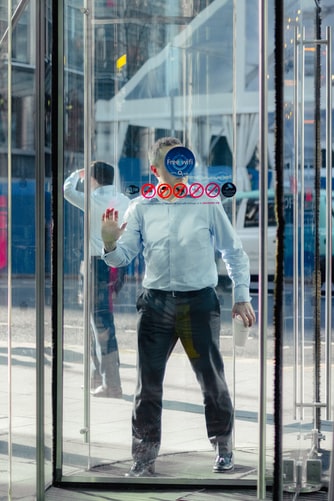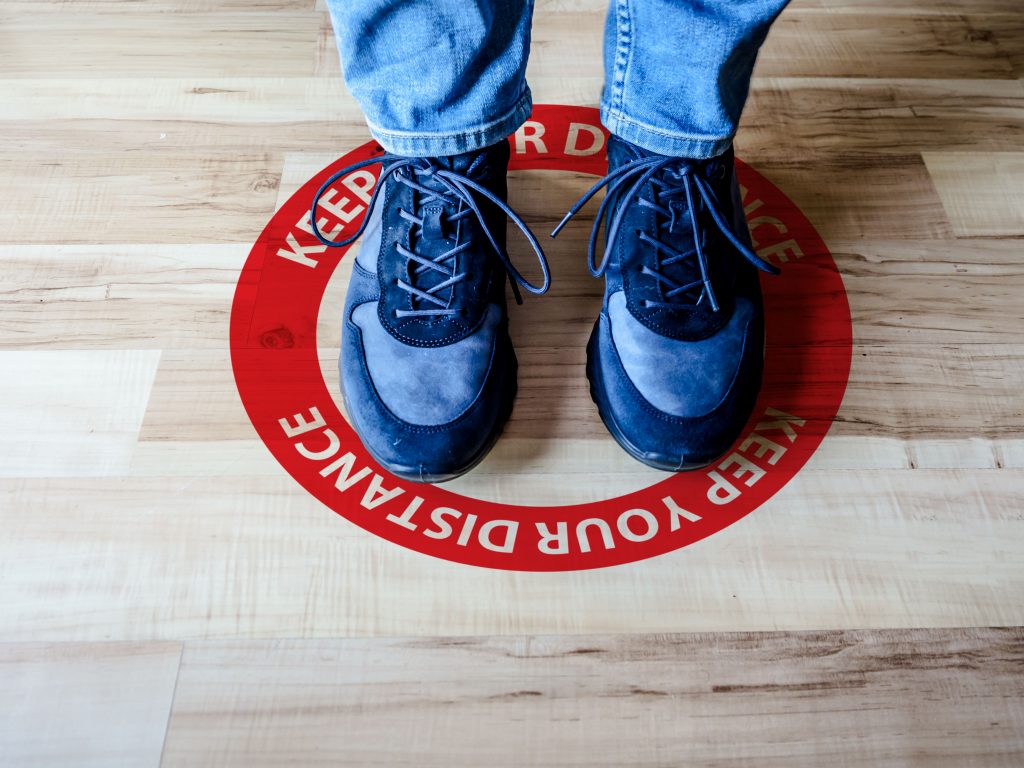Safe Space Management
We are here to help your business open its doors with confidence by providing universal Safe Space Management Standards and Best practices. Here you can find information, self-auditing checklists for your workplace and access to experts to assist with the integration into the “New Normal”.
Safe Space Management
Self-Declaration
An authorized representative of the company registering for self-Assessment agrees to adhere to the standards of Safe Space Management, the regional, provincial/state, and federal safety guidelines.
Universal Standards of Safe Space Management
We have prepared a framework of suggestions for universal Safe Space Management for all types of businesses. This is a collaborative effort driven by the business community.
Safe Space 1st, 3.11.2020, 5.11.2020
Universal Standards for Safe Space Management
- Portable handwashing stations should be placed outside of the facility where required.
- Employees should be monitoring the number of customers that enter and leave the premises. Store maximum should be based on 1 person per every 50 to 200 square feet. One person should be allowed to enter for every (one) person that exits after maximum capacity has been reached.
- Property external to a building should be monitored every 15 minutes for traffic management when safe distance requirements regarding spacing are at risk of being compromised
- Employers should dedicate an employee(s) to inform customers of safe distancing measures as well as hygiene etiquette upon their entrance into a facility, specifically when external gathering prevention is required. This action is required when the external gatherings become visually noticeable where an individual’s 6 linear feet of space is at risk of being compromised.

Exterior of the building, parking, delivery zones
- Portable handwashing stations should be placed outside of the facility where required.
- Employees should be monitoring the number of customers that enter and leave the premises. Store maximum should be based on 1 person per every 50 to 200 square feet. One person should be allowed to enter for every (one) person that exits after maximum capacity has been reached.
- Property external to a building should be monitored every 15 minutes for traffic
- management when safe distance requirements regarding spacing are at risk of being compromised.
- Employers should dedicate an employee(s) to inform customers of safe distancing measures as well as hygiene etiquette upon their entrance into a facility, specifically when external gathering prevention is required. This action is required when the external gatherings become visually noticeable where an individual’s 6 linear feet of space is at risk of being compromised.
- Frequent communication should be provided to customers. Large visible signs should be displayed around the premises promoting public health measures such as safe distancing, respiratory etiquette, and hand hygiene.
- Markers such as tape, paint or cones should be placed every 6 linear feet to provide customers with visible queues when waiting in line. This designated waiting area should be fenced or barricaded.
- Employee(s) should be stationed outside to clean and disinfect items such as shopping carts and baskets before and after customer use.
- Delivery Zone exit and entry points should be clearly identified and limited to receivers and deliverers only.


Entrances & Exits
- To reinforce safe distancing measures and hand hygiene etiquette, announcements should be made throughout the facility on a regular basis (approximately up to every 30 minutes as required based on property traffic throughout the operational period during business hours of operation).
- Floor markings should be visible and utilized inside facilities to facilitate the minimum suggested distance of 6 linear feet. Floors should always be clearly marked with directional arrows keeping in-store traffic linear and orderly keeping all people’s minimum safe distance in mind.
- Infrastructure should be modified to enhance safe distance and safe space by 6 linear feet. A maximum number of persons allowed within a premise at any one time should be determined, this, of course, being dependent on the size of the facility.
- Receivable goods should be separated, and date tagged before they enter and exit facilities as applicable for sanitation concerns.
- Facilities that require touch-tone access such as ringing a buzzer to enter, should have hand sanitizer dispensers readily available and signage informing individuals of staying 6 linear feet from the entrance once the buzzer is pressed.
- Frequently touched surfaces should be cleaned at a minimum suggested guideline which is at least twice per day. In addition to routine cleaning, surfaces that have frequent contact with hands should be cleaned and disinfected at least twice per day and when visibly dirty. Examples of frequently touched surfaces include doorknobs, water fountains, light switches, toilet handles, counters, handrails, touch screen surfaces, coffee machines, debit machines, tabletops, chairs, food contact surfaces, meal trays and kitchen and buffet serving utensils etc.
Employee & Consumer Spaces
- Aisles should be a minimum of 8 linear feet in width. Aisles under 8 linear feet will require traffic directional arrows in one direction only, marked clearly and identified every 6 linear feet.
- Traffic should always be directed to the right side of aisles leaving space for consumers requiring passing. Aisles less than 6 linear feet in width should restrict passing. Notices should be clearly visible with arrow markers placed ever 6 linear feet.

- At the beginning and end of each aisle, hand sanitizer dispensers should be placed in areas that are easily accessible and visible for consumers and employees
- As an additional level of protection for staff and consumers, physical barriers at the height of 6 linear feet such as plexiglass should be placed at check out or other service counters to create a barrier of 6 linear feet between employees and customers.
- During customer transactions, debit machines should be placed within 1 meter of both the employee and customer where tap purchases are not possible. Employees should be encouraging customers to utilize online services wherever possible.
- Frequently touched surfaces should be cleaned at a minimum suggested guideline which is at least twice per day. In addition to routine cleaning, surfaces that have frequent contact with hands should be cleaned and disinfected at least twice per day and when visibly dirty. Examples of frequently touched surfaces include doorknobs, water fountains, light switches, toilet handles, counters, handrails, touch screen
surfaces, coffee machines, debit machines, tabletops, chairs, food contact surfaces, meal trays and kitchen and buffet serving utensils etc. - Airflow and ventilation should be increased where the climate allows (open windows, use air conditioning where available etc.)
- Use of PPE should be enforced, and employers should be required to remove PPE after completing personal services in the presence of the consumer(s).
- Office space structure and setup should be modified to adhere to minimum safe distancing requirements. Workstations such as offices should each be placed 6 linear feet from one another, and chairs should be placed 6 linear feet from each other. An open-door policy should also be encouraged to avoid hand contact with doorknobs.
- To promote a minimum suggested distance of 6 linear feet for safe distancing, clear, visible signage should be posted within and outside of elevators indicating the maximum occupancy of persons allowed within an elevator at any given time.
- Directional arrows should be placed within elevators on floors indicating that occupants should not be facing one another and maintaining a safe distance of 6 linear feet.
- Hand sanitizer dispensers should be installed on every floor outside of the elevator lobby area. Signage should be posted to ensure clear visibility.
- Restroom facilities should have a determined maximum occupancy at one given time. Sinks and stalls should be a minimum distance of 6 linear feet apart from one another and with signage displayed bearing instructions on proper handwashing etiquette and safe distancing measures
- Places of employment should have designated eating areas that are marked with clear and visible signage managing safe distancing measures. These areas should also include hand-washing stations, cleaning supplies and disinfectant materials.
- Areas, where anyone is assigned to wait, should have a determined maximum occupancy at one given time. Infrastructure to these areas should also be modified (i.e., chairs and tables being 6 linear feet from one another, and clearly visible signage being posted on wall spaces.)
- Physical touchpoint areas for restroom facilities should be eliminated: censored taps, paper towel dispensers and garbage cans should be converted to hands-free models. Hands-free should be considered the standard to optimum safe distance adherence
- Service delivery approaches such as a drive-thru should be modified. Employees should be 6 linear feet away when approaching consumers.
- Where payment is required for parking, hand sanitizer dispensers and signage for safe distance measures should be placed beside payment machines.
- Storage space for employees such as lockers should not be shared and should be 6 linear feet apart from one another.
- Personal Service areas should be cautious and/or mindful of structures ensuring that both employees and consumers can always maintain 6 linear feet. Personal services businesses are expected to use PPE where applicable to ensure employee and consumer safety. Businesses such as hairstyling, barbering, eye examinations, childcare, specialty retail services and others where safe distance space is compromised due to the requirements of performing the service.

Restaurant Distancing & Occupancy Restrictions:
- Booth Seating should be a minimum 6 linear feet apart from other occupied booths
- Hand Sanitizer dispensers should be placed at the corners of every booth where possible and dividers should be placed between booths
- Occupied Banquet Seating should be a minimum of 6 linear feet apart from other occupied banquet seating sections or tables as assigned. It is the responsibility of the business to qualify the intimacy of each party, to seat accordingly. Individuals should be seated a distance of 6 linear feet from one another.
- Bar Seating should be a minimum of 6 linear feet apart from one another. Shorter distances can be implemented with protective barriers installed, meeting the minimum 6 linear feet in height, separating customers from one another.
- Plexiglass protective barriers should be installed between guests and bartenders to manage distance of 6 linear feet apart
- Aisle ways traffic flow should be managed with floor markings and signage at eye level to ensure that patrons understand the traffic restrictions. Arrows should be placed on floors going one-way to avoid crowding and keeping a minimum distance of 6 linear feet apart.
- Hand sanitizer dispensers should be placed at the beginning and end of every aisle
- Signage should be installed at both ends of every aisle providing clear and concise direction for customers and employees.
- Maximum and minimum occupancy rules for inside and outside of the restaurant should be based on the current pandemic concerns or official threat levels from 1 to 5. Level 1 identified as the minimum threat level to Level 5 representing the greatest level of safe threat.
- The number of customers at one table should be screened by the hostess or an employee assigned by management at the front entrance to ensure that the table occupants are known to each other and that the choice to sit together is mutual.
- The number off waitresses serving a table should be limited to 1 person only
- Restrictions on employees congregating in high traffic areas such as bathrooms, hallways, bar areas, reservation and credit card terminals etc. are required and should be enforced by management
- Measures such as floor markings or signs indicating where employees and guests should stand should be implemented to ensure safe distancing of 6 linear feet between employees and customers is adhered to
- Physical barriers should be installed at places such as cash registers, bars, host stands, and other areas where maintaining a safe distance minimum of 6 linear feet may be difficult. Other places include terminals deli counters and lines, restrooms, elevator lobbies, host standing and waiting areas, valet drop off and pick up and any other areas where customers and employees may congregate. Posted signage of these areas safe distance measures, restrictions, and where safe distance and safe space may be compromised should be posted to guide employees on implementation
- Where space permits, kitchens should be modified to ensure safe distancing and safe space management
- In areas where safe distancing measures may be compromised such as kitchens or storage areas, face shields and/or masks should be required
- Employee meetings and training should be conducted virtually or in areas that allow for proper safe distance between employees. Maximum meeting occupancy should be consistent with lawful requirement of what is deemed public gatherings as per the current identified pandemic threat level.
- Reservations are required to allow for time to disinfect restaurant areas and provide guidance through technology to customers for safe distance practices while at or in the restaurant.
- Customers should be instructed to wait in their vehicles or away from the establishment while waiting to be seated. If possible, customers are to be notified by text through their mobile devices when their table is ready to avoid touching and the use of buzzers.
- Designated delivery areas where food is received and distributed should be clearly marked with signage and located away from high traffic areas. Handover procedures should be developed
- Hand sanitizer dispensers should be made available at doors for guests who must touch door handles. Signage should be posted making customers aware of store traffic plans and applicable safe distance measures.
- Employers should be assigning employees to manage customers entering the establishment throughout the facility and is based on facility traffic plan. Employers should also be designating a host/hostess to direct customers to their assigned tables.
- Lines should be placed to ensure that safe distancing and safe space management measures are being followed to manage traffic and avoid overcrowding and safe space and distance from being compromised
- Exterior queuing or any other methods of managing traffic flow should not block exits and should be arranged to maintain safe space management.
- If possible, distinct walking lanes should be implemented to minimize close contact as customers are being seated to conform with safe distancing practices. For example, in a table/booth layout, central tables can be removed, and markings can be installed designating the path for seating. If possible, partition walls should be implemented to separate high traffic walking areas from tables and customers. Signage should be required in all areas where safe distance and spacing is compromised.
- To avoid contact overlap, servers should serve specific zones in the restaurant where possible. This should be identified in the facility traffic plan.
Sanitation
- Menus should be laminated or made from materials that can be cleaned after each usage. Paper menus/disposable menus should be designated for single use and disposed of immediately after customer order is taken.
Buffet options: Buffet Trays should be replaced by packaged food stations and each food station should be placed 6 linear feet apart from one another.
- When waiting in line at these food stations, clear visible markers will be placed on the ground to enforce keeping a distance of 6 linear feet from one another
- Single-use items such as packets of ketchup or salt should be used as much as possible. Disposable condiments are highly suggested.
- Employers should be designating staff members to sanitize surfaces in dining areas or restrooms and posting their last cleaning time. Washrooms should be cleaned approximately every two hours, rotating between men’s and women’s posted restrooms.
- Handwashing stations or hand sanitizer dispensers should be placed at all entrances, tables, exits and communal spaces throughout the establishment
- Employers should implement hourly touch point sanitation routines (e.g.; for workstations, equipment, screens, doorknobs, restrooms throughout the site)
- Single-use items such including, but not limited to, disposable silverware, condiment packets and straws should be removed from public access and only handed out upon request
- Takeout containers should be filled by customers only and only available upon request
- Waiting inside restaurants should not be permitted, individuals should be staying in their vehicles and being texted when their tables are ready
- Thorough cleaning in high traffic areas should be done, such as customer lobbies, break rooms, lunch areas and areas of ingress and egress including host stands, entryways, stairways, stairwells, escalators, handrails, and elevator controls
- Commonly used surfaces including doors, door handles, crash bars, light switches, waiting area chairs, credit card terminals, ATM PIN pads, receipt trays, bus tubs, serving trays, water pitcher handles, phones, toilets, and handwashing facilities should be frequently disinfected.
- When handling dirty linens, employees should be wearing gloves and removing them from tables after each party has finished their meal
- Customer dining locations should be cleaned after each use. This should include disinfecting tables, chairs, booster seats, highchairs, booths, etc. and allowing adequate time for proper disinfection, following product instructions
- Restaurants should increase fresh air circulation by opening windows and doors if possible
- Restaurants should consider installing portable high efficiency air cleaners, and upgrading building filters as well as making other modifications to increase the quantity of outside air and ventilation in all working areas
- Tableside food preparation, food item selection carts, and conveyor belts should be discontinued
- Customers should be provided with the check and should only be provided with after meal mints upon request
- Hand sanitizer dispensers, touchless, if possible, should be installed at guest and employee entrances and contact areas such as reception areas, in dining rooms, near elevator landings, etc.
- Shared entertainment items such as board games, pool tables, arcade games, vending machines, etc. should be discontinued. Game and entertainment areas where customers may share items such as bowling alleys, etc. should be closed unless disinfected after each practice
- Touchless appliances such as contactless payments, paper towel dispensers, soap dispensers and trash cans should be installed wherever possible
- Refilling customer beverages from common containers such as pitchers should be eliminated. Only bottled, canned or boxed self-contained beverages should be used.
- Doors to multi-stall restrooms should be able to be opened and closed without touching the handles, opening-devices, or powered door-operators with the hand, whenever possible.
- An elevated cleaning and sanitizing schedule for all surfaces that staff and customers contact should be created and executed
- Food establishments should use mobile ordering and payments where possible to reduce hand contact. The use of no-touch entrances and exits are suggested, as well as having separate entrances and exits where possible
- Buffet and self-serve restaurants should provide utensils, cups, plates and other service items only from the counter where food is ordered and should not be accessible to the public
- Access to soap and hand sanitizer dispenser stations should be easily accessible to employees at all times during and after work hours.
Other Operational Guidelines
Temperature checks:
- Kitchen staff should be screened regularly due to Safe Space Management
- Pres-screening questionnaires should be drafted and given to customers in advance to avoid people with symptoms entering the premises.
- Customers should be having their temperatures checked before entering the restaurant and after leaving the restaurant.
- Employers should designate employees to manage the entrances and exits of establishments to ensure that customers do not enter on their own
- Employees should be having their temperature checked before their shift starts, half way through their shift. Frequency of these checks will be dependent on the duration of the shift
- Employers should be designating at least 2 employees to conduct the temperature checks
- Restaurant owners have the right to refuse anyone who may be showing symptoms
- Establishment owners should be designating hosts/hostesses to ask customers pre- screening health questions at building entrance and customers should only be permitted access depending on answers given
- Reservations should be encouraged; walk-ins are permitted if a visitor log is kept that has sufficient information to be able to contact a visitor should the need arise
- A Mitigation plan should be established to address the measures and practices to protect staff and the public.
- Hard copies of written safety, sanitization, space management, and safe distancing measures should be left on the business premises.
- Signage should be placed at the front of restaurants to alert patrons not to enter the facility if they are sick or have symptoms such as cough, sore throat, fever, or shortness of breath
- Restaurants are encouraged to have a senior hour to provide exclusive access to these high-risk individuals.
- A set of clearly visible rules should be displayed for customers and restaurant personnel at the restaurant entrance(s) that are to be a condition of entry.
- Employers should be placing hosts at the front entrances to ensure that safe distancing and safe space management measures are displayed on signage is being followed
- Rules on signage should include instructions to use hand sanitizer, maintaining the instructed safe distance from other customers, avoid unnecessary touching of restaurant surfaces, contact information for the local health department, and changes to restaurant services
- Whenever possible, the rules should be available digitally, include pictograms, and included on/with menus
- Outdoor seating and curbside pickup options should be prioritized to minimize over crowding of customers in more restricted areas. Takeout, delivery, and drive through options should be encouraged. Traffic management is required by management to ensure the health and safety of consumers and employees.
- Pickup and delivery standards for takeout food items should be made available using contactless methods. Notices for pick up and delivery codes should be posted at the restaurant entrance, and on the website for online orders
- Employers should designate employees to direct traffic in parking lots. Signage should be clearly displayed where pedestrians can walk
- Consumers should be asked to wait in their vehicles when there are longer wait times and be informed that they will be texted when their tables are ready
The next revision of Safe Space 1st Safe Space Management framework will include documentation, training, and assessment. Standards of Safe Space Management will be available in Spanish and French shortly.
